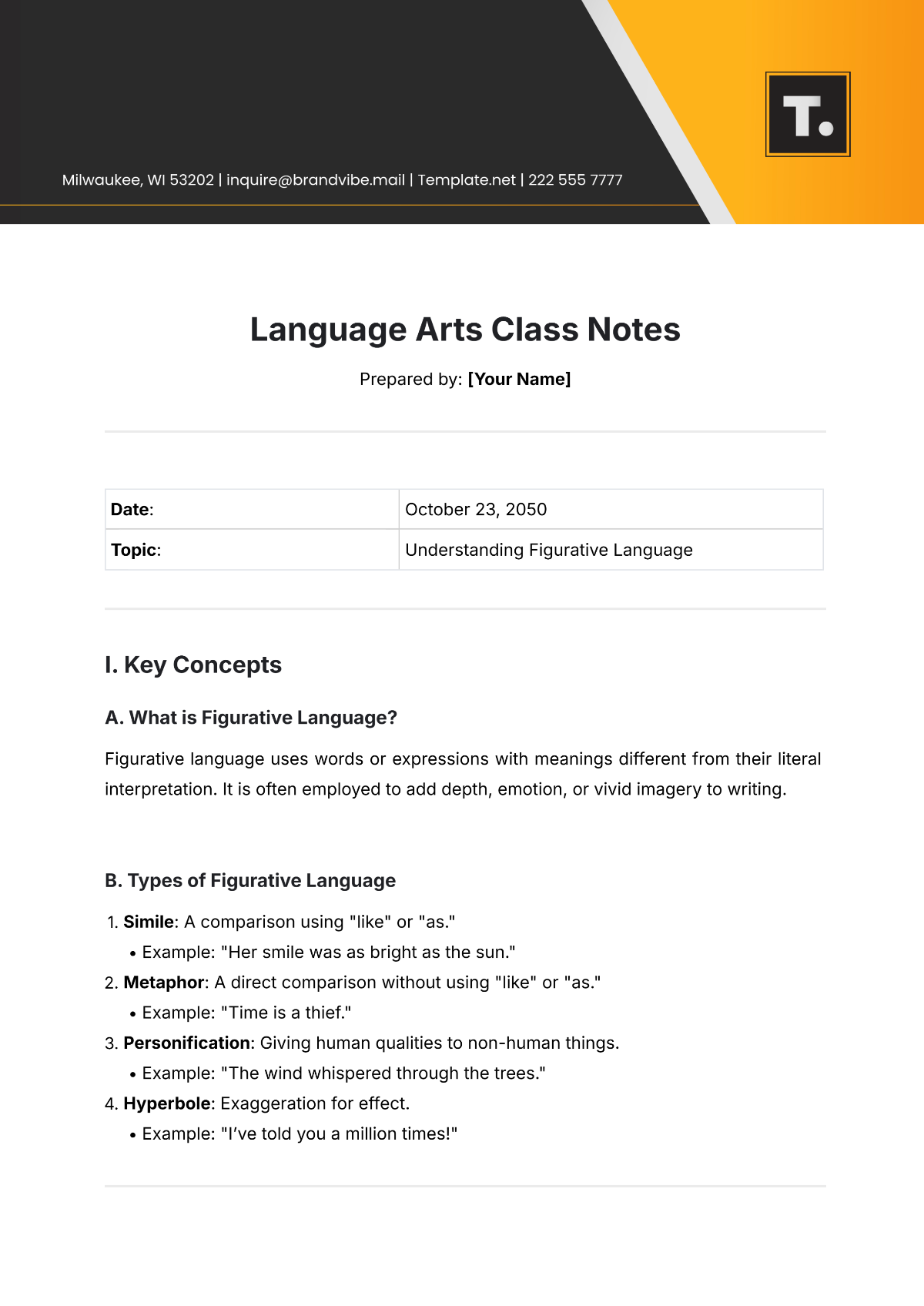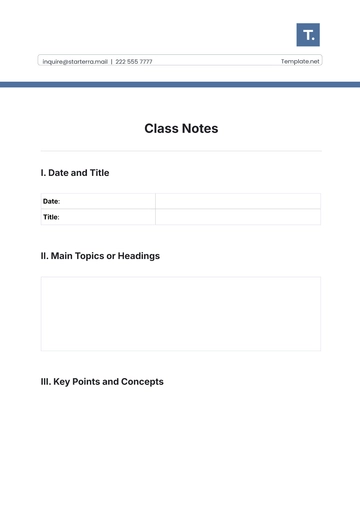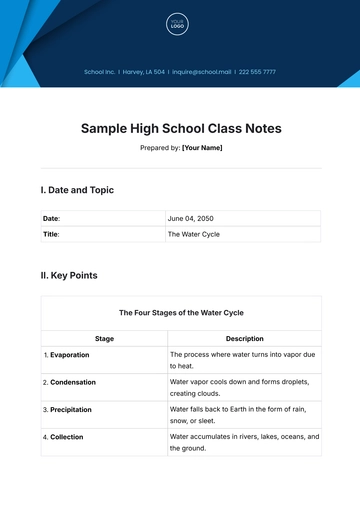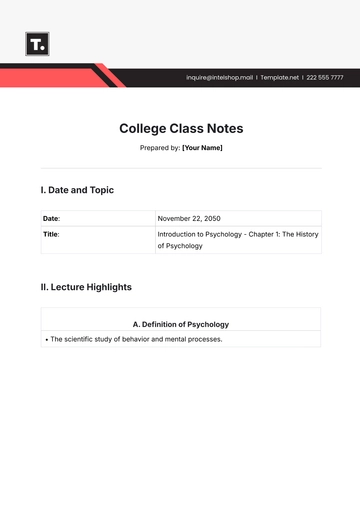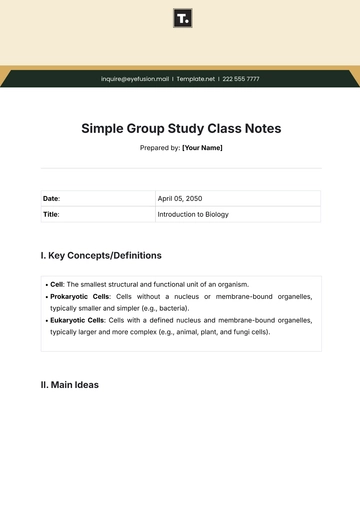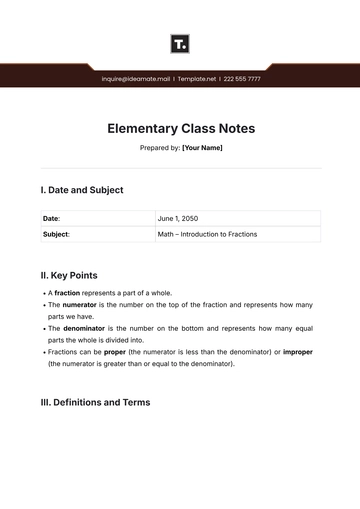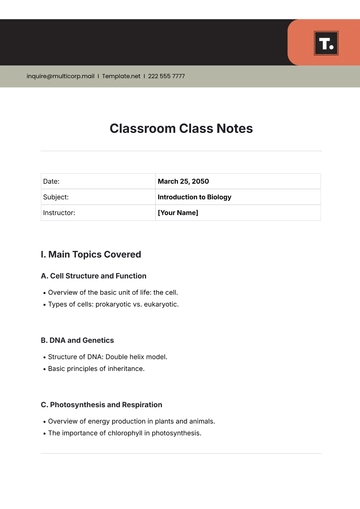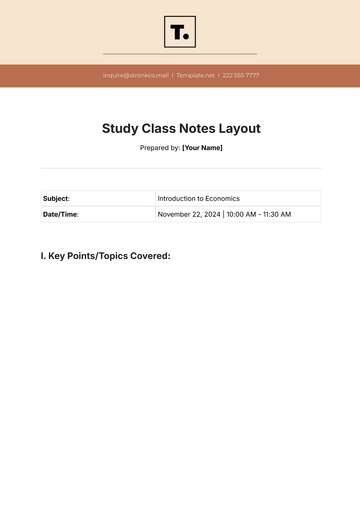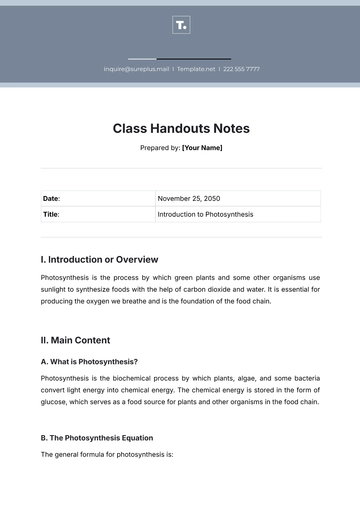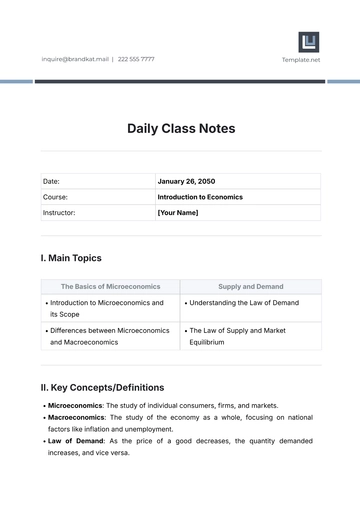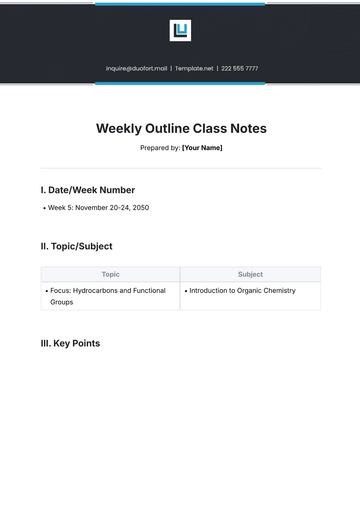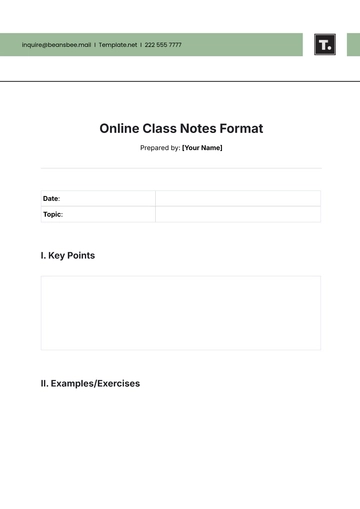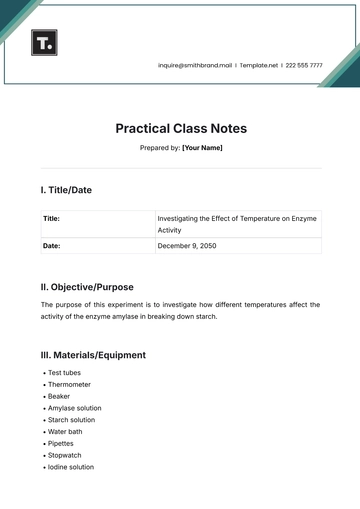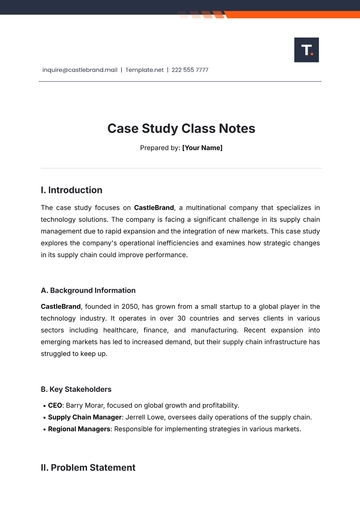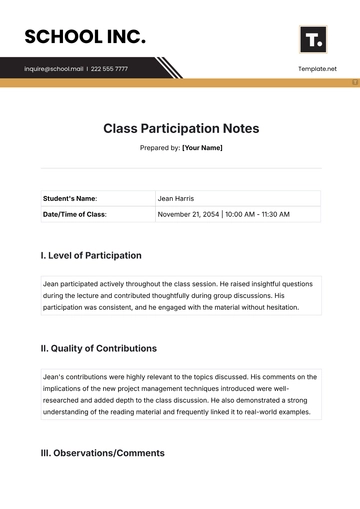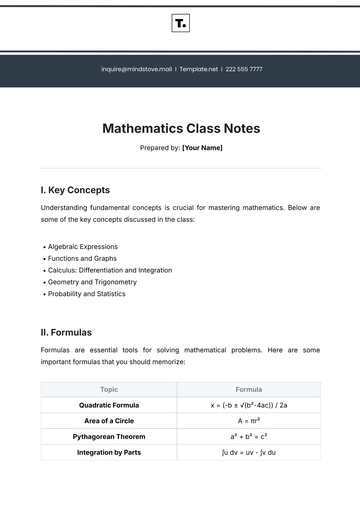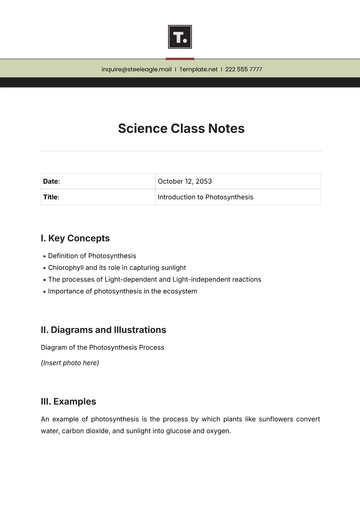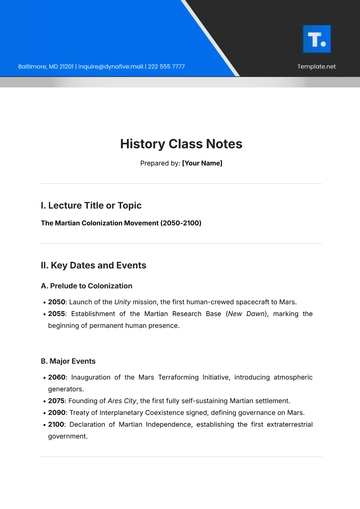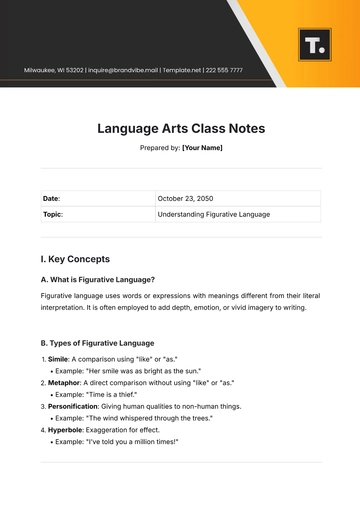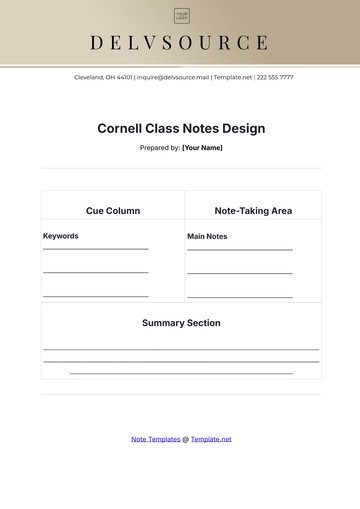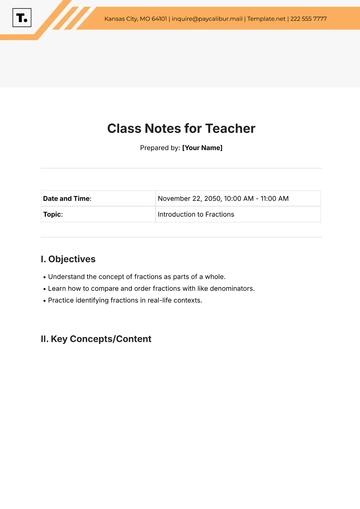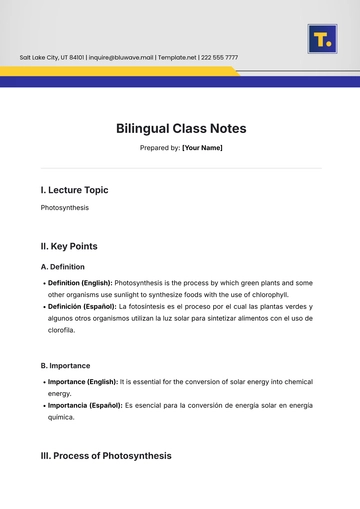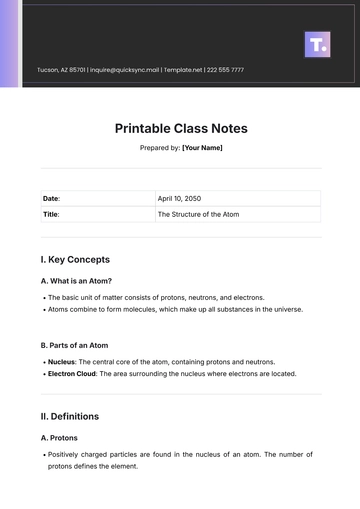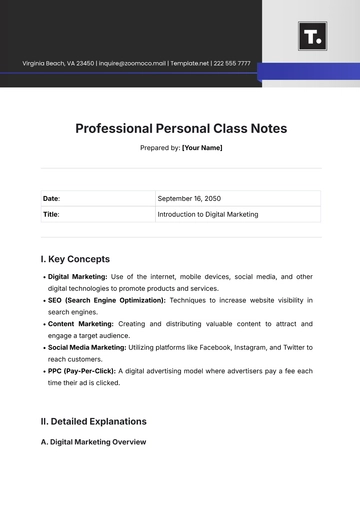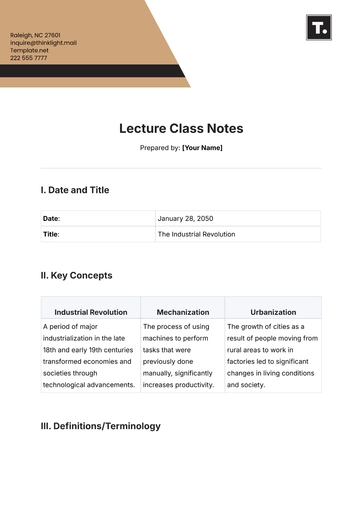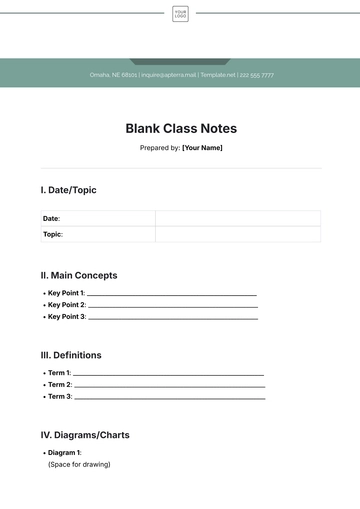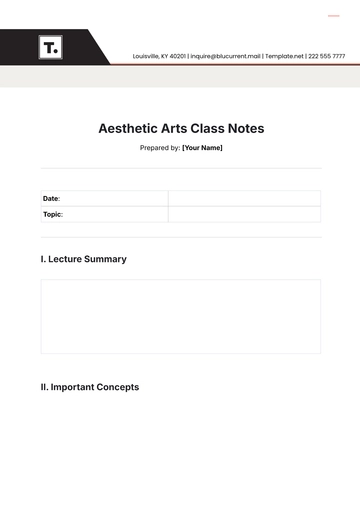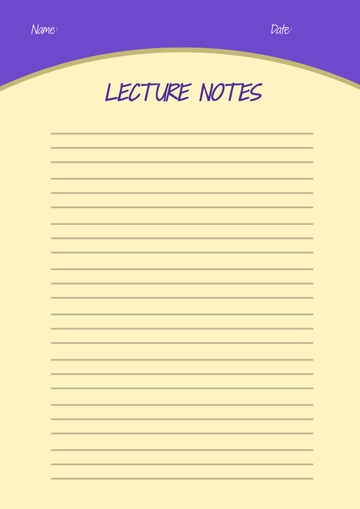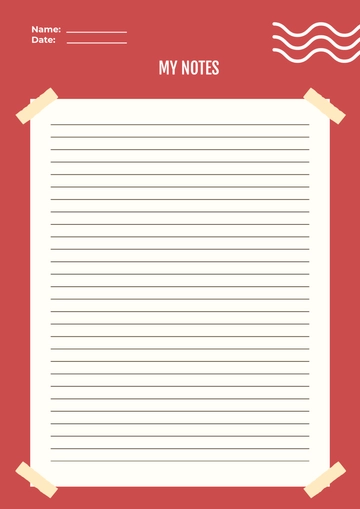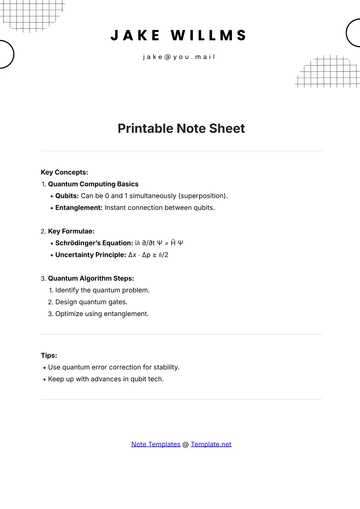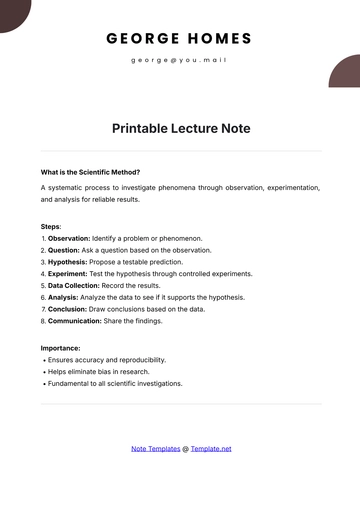Language Arts Class Notes
Prepared by: [Your Name]
Date: | October 23, 2050 |
Topic: | Understanding Figurative Language |
I. Key Concepts
A. What is Figurative Language?
Figurative language uses words or expressions with meanings different from their literal interpretation. It is often employed to add depth, emotion, or vivid imagery to writing.
B. Types of Figurative Language
Simile: A comparison using "like" or "as."
Metaphor: A direct comparison without using "like" or "as."
Personification: Giving human qualities to non-human things.
Hyperbole: Exaggeration for effect.
II. Examples
A. Identifying Figurative Language in Literature
B. Writing Practice Example
III. Vocabulary
Words to Know
Imagery: Descriptive language that appeals to the senses.
Allusion: An indirect reference to a well-known text, event, or idea.
Symbolism: The use of symbols to represent ideas or concepts.
IV. Questions/Discussions
A. Class Questions
B. Discussion Highlight
A classmate noted that metaphors can make abstract ideas more relatable, which helps readers connect emotionally with the text.
V. Homework/Assignments
Assignment
Read a poem of your choice and identify at least three types of figurative language used.
Write a short paragraph explaining how these elements contribute to the poem's theme.
VI. Personal Insights
I find metaphors particularly interesting because they can make even simple ideas feel profound. This lesson showed me how much power words have when used creatively.
Note Templates @ Template.net
